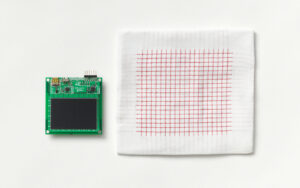Google’s Project Jacquard – Smart Fabrics at Scale
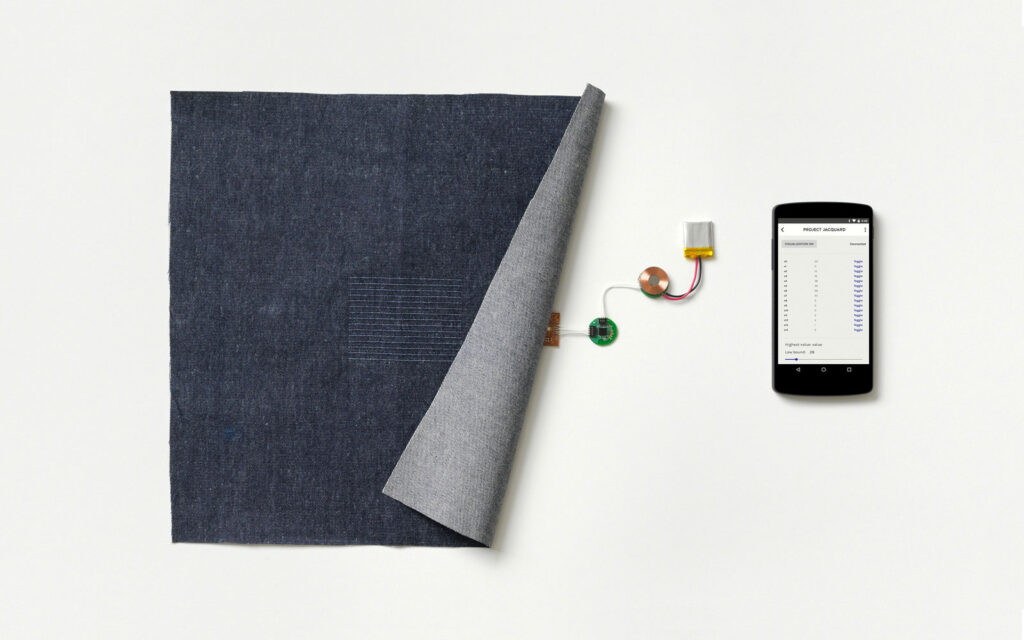
Google’s Project Jacquard
At Google’s I/O Conference for developers, the Big G unveiled contraptions such as a touchless smart watch, a Micro SD card security computer, a modular phone, a password-replacing detection system and a new take on smart fabrics – Project Jacquard.
Google’s Project Jacquard involves weaving electronics into fabric to create a touch surface much like the touchscreen on a smart phone – or perhaps more accurately, the touchpad mouse on your laptop, since you probably won’t have an actual display screen on your jacket. You can slide, swipe, tap and do a number of other simple gestures with the conductive fabric.
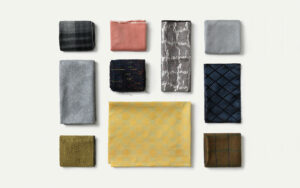 The threads are indistinguishable from fabrics such as cotton, polyester, or silk, are cost-effective and just as strong, allowing their use on standard industrial looms. Makers can either weave the threads at precise locations on the garment or throughout the fabric. Google scaled down the embedded electronics the threads connect to the size of jacket buttons, and the touch motions are wirelessly transmitted to, presumably, mobile devices – or possibly straight to cloud services. There’s also mention of “embedded outputs” like LEDs and haptics as well.
The threads are indistinguishable from fabrics such as cotton, polyester, or silk, are cost-effective and just as strong, allowing their use on standard industrial looms. Makers can either weave the threads at precise locations on the garment or throughout the fabric. Google scaled down the embedded electronics the threads connect to the size of jacket buttons, and the touch motions are wirelessly transmitted to, presumably, mobile devices – or possibly straight to cloud services. There’s also mention of “embedded outputs” like LEDs and haptics as well.
Google claims that the fabric is “a blank canvas for the fashion industry” that designers can blend into garments without any knowledge of how the electronics work, and that developers can connect to existing apps and services as well as create brand-new uses for the smart fabrics.
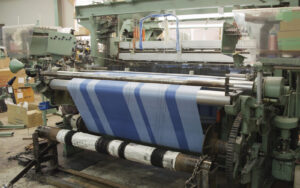 Although Google has not made clear exactly what the new stuff is for, the iconic jean manufacturer Levi’s apparently thinks it has potential – Google announced Levi’s as the first “partner company” for Project Jacquard. Beyond jeans, Project Jacquard’s project lead Ivan Poupyrev believes that manufacturers can integrate the new Google fabric into car seats, curtains, almost everything. Conductive fabrics aren’t new – the real potential breakthrough is that conductive fabric can finally be produced at scale with the same machinery and looms the textile industry already uses.
Although Google has not made clear exactly what the new stuff is for, the iconic jean manufacturer Levi’s apparently thinks it has potential – Google announced Levi’s as the first “partner company” for Project Jacquard. Beyond jeans, Project Jacquard’s project lead Ivan Poupyrev believes that manufacturers can integrate the new Google fabric into car seats, curtains, almost everything. Conductive fabrics aren’t new – the real potential breakthrough is that conductive fabric can finally be produced at scale with the same machinery and looms the textile industry already uses.
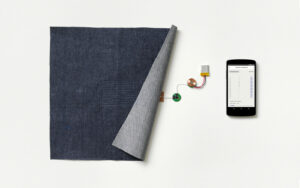 Poupyrev thinks that some uses might include everything that current wearables do (such as fitness tracking) and do them better. Other uses might include, as Wired Magazine quotes Poupyrev, “What if your phone knew you were getting dressed up, and called a Uber taxi as soon as you finished knotting your bow tie? What if it could automatically track your exercise as soon as you put on your running shoes? What if you could talk to your phone with a single, discreet swipe on your arm? What if it could talk back?” Or how about an integration with MIT’s Social Fabrics?
Poupyrev thinks that some uses might include everything that current wearables do (such as fitness tracking) and do them better. Other uses might include, as Wired Magazine quotes Poupyrev, “What if your phone knew you were getting dressed up, and called a Uber taxi as soon as you finished knotting your bow tie? What if it could automatically track your exercise as soon as you put on your running shoes? What if you could talk to your phone with a single, discreet swipe on your arm? What if it could talk back?” Or how about an integration with MIT’s Social Fabrics?
Anyhow, here’s Google’s official Project Jacquard video for their own take on it:
If real uses for the fabric come out, we can expect to see these Project Jacquard’s results in fashion stores everywhere – and possibly in the hands of product decorators. One potential tech hurdle, though —
How do you wash the stuff without shorting the circuits?
There’s no denying that technology can help the decorated apparel industry, even if not in so innovative a form. Check out ShopWorks OnSite for a full business software solution for your entire business.
Like this article? Learn more about the Wearable Tech Trend.
